Types of Water Testing
Do you know that the water which we use for different purposes be it domestic, agriculture, business or the glass of water that you might be sipping while going through these lines could be of inappropriate quality?
According to the World Bank Report of 2019, the deteriorating quality of water worldwide is slashing the economic potential of heavily polluted areas. It also warns the invisible crisis of water quality is threatening human and environmental wellbeing.
Albert Szent Gyorgyi a Hungarian biochemist who won the Nobel Peace Prize in Physiology or Medicine has said, “Water is life’s matrix, mother and medium. There is no life without water”. Water is crucial for all the activities. However, it is a matter of concern that the quality of water is deteriorating due to a plethora of factors.
Water quality is not entirely dependent on human activities, other simmering factors like weather and meteorology floods due to climate change can increase the water pollution as the pollution from farms, residential lawns, overfilled sewage systems, trash, animal waste, nitrogen phosphorous mixes in water ways which increases the risk of contamination and higher cost of water treatment. There is a notion that water quality is getting severely affected by climate change.
Water is the most important necessity for the survival of all living beings whether humans, animals or plants, all of them need water. Water is the second most important element after air for survival. According to the data released by surveys only 3% of the water on earth is fit for consumption.
Water is getting affected in a big way due to the pollutants/contaminants released by the industries and through households with large amounts of heavy metals and dangerous bacteria released everyday into water resources like rivers. Agricultural activities also contribute to the water contamination as chemicals such as fertilizers and pesticides enter into ground water through leaching. The industrial units release large amounts of gasses and heavy elements such as sodium bicarbonate, iron, zinc, carbon dioxide, sulfate, chloride, fluoride could prove to be fatal for human health.
The consumption of contaminated water is extremely dangerous and can lead to serious illness. The water should be tested and purified before any sort of consumption whether it is for drinking, cooking or while being used as an additive in food products. Water can also cause allergy which is scientifically known as ‘aquagenic urticaria’ or ‘water urticaria’. A large number of diseases nowadays are waterborne.
Chemical Water Quality Parameter
Several parameters help to determine water quality
1. Chloride ion:
The concentration of chloride ions is quite low in natural water systems. It increases in contaminated water. Moreover, high concentration of chloride ions makes the water salty and corrodes pipelines of water.
2. Ammonia:
The decomposition of organic matter like protein, amino acid increases the concentration of Ammonia in water. Besides, it also increases with the use of chloramine in the water disinfection process. Concentration of NH3 in ground water systems is usually 3mg/ltr. If its concentration is greater than 50mg/ltr, it gives characteristic taste and odor.
3. Nitrite:
- It is a very unstable intermediate formed during conversion of NH2 into nitrate.
- In aerobic condition nitrite is oxidized into nitrate whereas in anaerobic condition, nitrite is reduced to ammonia.
- If the concentration of nitrite is greater in drinking water, it brings serious health hazards to the consumers.
- Disease caused by high concentration of nitrite in infants is called Blue baby syndrome, which is characterized by blue coloration of skin
- Level of nitrite in drinking water should not exceed 3mg/ltr.
- **Note; blue baby syndrome: hemoglobin has greater affinity for nitrite than oxygen. Therefore, if the level of nitrite is high in blood due to consumption of contaminated water then it inhibits formation of oxyhemoglobin, instead it forms nitrosomyoglobin. This prevents transport of Oxygen to tissue giving characteristic blue color. In infants nitrite poisoning occurs even due to high concentration of nitrate in drinking water because the stomach of the infant is less acidic. In this situation nitrate is reduced by intestinal bacteria into nitrite causing blue baby syndrome.
4. Nitrate:
- It is the most stable oxidized form of nitrogen. In water nitrate comes from organic matter decomposition and from atmospheric nitrogen fixation.
- Like nitrite Nitrate should not exceed 3mg/ltr in drinking water. It is because nitrate can be reduced into nitrite in the gut of infants and causes nitrite poisoning.
- Nitrate is very important in natural water systems like lakes and ponds because high concentration of nitrate facilitates heavy growth of aquatic plants causing eutrophication.
5. Phosphate:
- In water phosphate is present in the form of H2PO4-, polyphosphate and as organic phosphate.
- Phosphate in water sources comes from agricultural wastes, sewage and from industrial effluent.
- Phosphate is not toxic to human beings but it is an important chemical in natural water systems like ponds because its high concentration facilitates eutrophication.
6. Hardness:
- Hardness of water is merely due to salt of calcium and magnesium.
- Temporary hardness is due to carbonate and bicarbonate of calcium and magnesium while permanent hardness is due to chloride and sulfate of calcium and magnesium.
- Water is classified as 9on the basis of concentration of calcium carbonate)
- Soft water:<5omg/ltr
- Moderately hard water: 50-150 mg/ltr
- Hard water: 150-300 mg/ltr
- Very hard water:>300 mg/dl
- Hard water is not suitable for industrial use. But hard water is usually beneficial for drinking purposes. However, hardness caused by MgSO4 gives some serious health effects. So, the concentration of Mg++ should not exceed 50 mg/lt in drinking water.
7. Biological oxygen demand (BOD):
- Biological oxygen demand represents the amount of oxygen required by living organisms (microorganisms) for oxidation of biodegradable organic matter present in water under aerobic conditions.
- BOD is a direct measurement of quality of oxygen needed for biodegradation of organic matter and indirect measurement of quantity of biodegradable organic matter in water.
- When biodegradable organic matter is added in water. Microorganism utilizes dissolved oxygen to oxidize organic matter. If the rate of consumption of oxygen during biodegradation is greater than solubilization of atmospheric Oxygen into water, level of dissolved oxygen gradually decreases.
- If organic matter content is very high, complete loss of dissolved oxygen occurs. This creates anaerobic environment in water. In this case aerobic aquatic organisms cannot survive.
- Furthermore, if dissolved oxygen is absent then organic matter starts to decompose anaerobically that creates taste and odor problems.
- High value of BOD is an indicator of water pollution.
What are different types of water testing?
There are a wide range of water quality tests used to help determine how safe, or even drinkable, water is to be used in a household setting or otherwise that water test labs perform.
These different types of tests help determine if specific materials or contaminants have infected a body of water, and help inform how it needs to be further treated. Here are just a few types of water testing methods.
Bacteria Tests
There are a range of potential bacterial contaminants that can plague water. One of the most common and most looked for is E. coli bacteria, which comes from fecal matter exposure and can result in serious health issues when consumed. Bacteria testing is essential in determining how safe water is to drink or expose to your skin.
Mineral Tests
The list of mineral testing available could be a thesis paper, for how many there are. A few common and important mineral tests include chlorine and chloride, nitrate and nitrite, lead, copper, iron, zinc, potassium, and sodium.
This wide range of mineral testing is essential and relevant in determining water quality, as different regions or areas of terrain may have more of a build-up of certain types of minerals, which informs what kind of mineral treatments the water actually needs in order to be purified.
pH Testing
pH is a measure of the concentration of hydrogen ions in a solution.
The more of these hydrogen ions there are in a solution, the more acidic that water is. Acidity affects the taste of water, but it can also affect how healthy water is to consume. Drinking water that’s not neutral enough in acidity can make people sick!
Other Types of Testing
There are some basic water tests that don’t have anything to do with chemical testing: conductivity, odor, sediment, and turbidity. Not relevant in all situations, these tests create a measure of the more physical traits of a water sample.
Is it clear, or clouded with sand and silt? Does it smell swampy, or fresh? How well does it convey electricity—and what does that say about the mineral content?
What is the most important water quality test?
Quality of drinking water indicates water acceptability for human consumption. Water quality depends on water composition influenced by natural processes and human activities.
Water quality is characterized on the basis of water parameters (physical, chemical, and microbiological), and human health is at risk if values exceed acceptable limits [1–3]. Various agencies such as the World Health Organization (WHO) and Centers for Disease Control (CDC) set exposure standards or safe limits of chemical contaminants in drinking water.
A common perception about water is that clean water is good-quality water indicating knowledge gap about the presence of these substances in water. Ensuring availability and sustainable management of good-quality water is set as one of the Sustainable Development Goals (SDGs) and is a challenge for policy makers and Water, Sanitation and Hygiene (WASH) practitioners, particularly in the face of changing climatic conditions, increasing populations, poverty, and the negative effects of human development.
Water quality tests will give information about the condition of the waterway. By testing water over a period of time, the changes in the quality of the water can be seen. Parameters that may be tested include temperature, pH, turbidity, salinity, nitrates and phosphates.
Drinking water can come from different sources depending on where we live in the world. Three sources that are used to collect drinking water are:
Water is in continuous movement on, above, and below the surface of the earth. As water is recycled through the earth, it picks up many things along its path. Water quality will vary from place to place, with the seasons, and with the various kinds of rock and soil it moves through.
For the most part, it is largely natural processes that affect water quality. For instance, water moving through underground rocks and soils may pick up natural contaminants, even with no human activity or pollution in the area.
In addition to nature’s influence, water is also polluted by human activities, such as open defecation, dumping garbage, poor agricultural practices, and chemical spills at industrial sites (see also water source protection).
Even though water may be clear, it does not necessarily mean that it is safe for us to drink. It is important for us to judge the safety of water by taking the following three qualities into consideration (see also pathogens and contaminants):
- Microbiological – bacteria, viruses, protozoa, and worms
- Chemical – minerals, metals and chemicals
- Physical – temperature, color, smell, taste and turbidity
Safe drinking water should have the following microbiological, chemical and physical qualities:
- Free of pathogens
- Low in concentrations of toxic chemicals
- Clear
- Tasteless and colorless (for aesthetic purposes)
When considering drinking water quality, microbiological contamination is the main concern in most cases since it is responsible for the majority of illnesses and deaths related to drinking unsafe water. Learn more about water purification.
Our Water Testing Services
Our water testing solutions can help a homeowner, business, contractor or research group understand the water quality that they’re dealing with.
We conduct the water quality assessment to measure concentration of the constituents in quantity for characterization of water for different uses. The Bureau of Indian Standards has defined different purification levels of water for different uses and our company follows strict guidelines set up by the BIS. We have experienced teams working in different laboratories on multiple locations serving various clients by offering them the best of our services.
Our laboratories in pan India locations are accredited by NABL, FSSAI, BIS, CDSCO, ISM&H, APEDA, EIC/EIA, AGMARK.
We have the following provisions for water testing – * Drinking Water Testing – IS 10500, * Packaged Drinking Water Testing – IS 14543, * Packaged Natural Mineral Water Testing – IS 15485, * Water for Food Processing Industry – IS 4251, * Borewell Water Testing – IS 10500, * Borewell Water Testing as per WHO, * Borewell Water Testing as per EPA, * Water Testing as per EC 93.
Contact now by calling us on our contact number or you can also post your query on filling and submitting the contact form and we will reply with a free proposal.
Contact us today to get started!




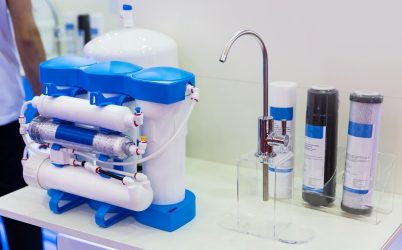

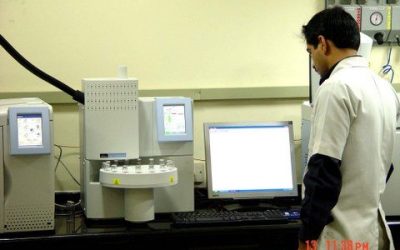
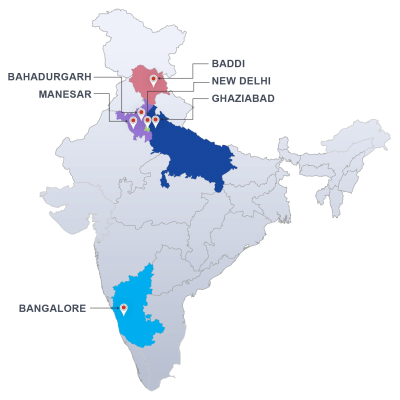
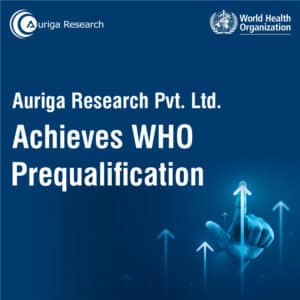


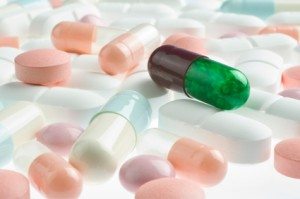
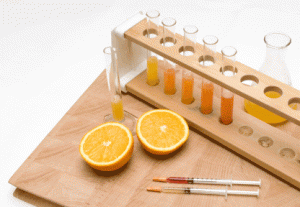

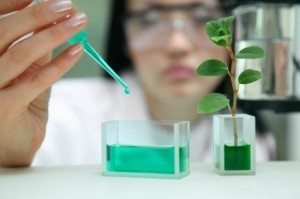


5 Responses
Good work
It was interesting, productive, and of all educative. I’ll like to get the reference….
Dear Fatima,
Thank you for your positive feedback on our water testing article. We’re glad you found it interesting and educational. Could you please clarify what type of reference you’re seeking? We’re here to assist you further. Feel free to provide more details.
This is very informative, educational, and interesting.
Thank you for your feedback!